Stafford Lake Park in Spring
- Jack Gedney, May 18, 2017 Click here for printable pdf version.
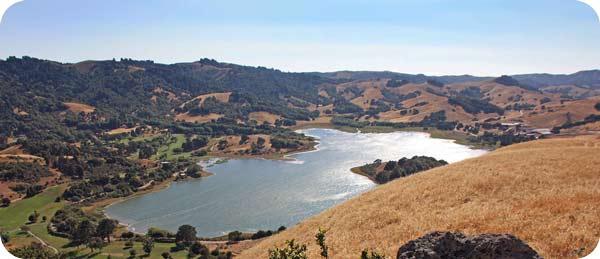
|
Up in the hills to the west of Mount Burdell are the headwaters of Novato Creek, which then tumbles down through the rolling slopes until it runs into the Stafford Dam and forms the placid Stafford Lake, which now provides around 20% of the town’s water. Much of the land around the lake is owned by the water district and is kept undeveloped, but a parcel of land around the east shore is owned by Marin County Parks and has been turned into a fancy park with picnic facilities, playgrounds, bathrooms, and similar amenities. The combination of Stafford Lake’s location a few miles out of town and a daily entrance fee of $5 keeps the crowds down, however, and means that geese usually outnumber humans here at their watery stronghold. In winter, the lake fills up with ducks, in accordance with the general practice of our seasons, which see most of our waterfowl (mallards and Canada geese the major exceptions) head north to summer breeding grounds from roughly April through September. In summer, then, the lake surface itself can seem strikingly underpopulated by birds. But that’s ok! Stafford Lake has other, very special, avian attractions for this time of year, in particular its status as the absolute premier Novato hotspot for two special tropical migrants: Bullock’s orioles and western kingbirds. Both are quite easy to find here, present in lower numbers in a few other spots around town, and utterly beneath the radar of most people who don’t go looking for them. The Bullock’s oriole is one of our two oriole species that comes up from Mexico in the summer months, first appearing in late March and sticking around through August. (Our other oriole is the hooded oriole, which is much the more common around backyards due to its reliance on California fan-palms, a common ornamental, for nesting.) The Bullock’s oriole is a close relative of the famous eastern Baltimore oriole and was formerly classified as a regional subspecies paralleling that eastern bird under the overarching name of northern oriole. But Mr. Bullock, a minor ornithological collector, natural history exhibitor, and would-be utopian community founder, is currently in favor with the arbiters of bird classification and may now posthumously enjoy the glory of full species-level taxonomic exaltation. Orioles can be somewhat glibly classified as colorful blackbirds – they are in the same family, as similarities of size, shape, and some calls suggest – but colorfulness can make a big difference to the mental categories of us humans, conjuring up visions of tropical splendors, lush rainforests, and papayas. Male birds are particularly stunning, with a palette of orange, white, and black, clearly delineated with striking eye-lines, caps, and chins. Females are still notable, with yellow upper parts and white bellies. Bullock’s orioles make purse-like nests out of a variety of a plant fibers, hanging in branches of a variety of native trees, most frequently in this case in the many coast live oaks around the park. These flaming splendors can be found all around Stafford Lake, but are usually convenient to find as you enter the park, turn left, and park near the bathroom. Walk around between this parking area, the lake in front of you, and along the path leading to the little peninsula on the left. Listen for this song and chatter and keep your eyes open for some blackbird-sized comets. Following more or less the same distribution within the park as the orioles is Stafford Lake’s second specialty summer visitor from Central America, the western kingbird. This is a good sized flycatcher: clearly bigger than phoebes or diminutive pacific-slope flycatchers, and slightly outweighing the ash-throated flycatcher. Kingbirds derive their name from their old Linnaean genus name of Tyrannus, or tyrant, in reference to their habit of fearlessly chasing much larger birds who invade their nesting territory. Both male and female are striking birds arrayed with bright yellow bellies setting off their otherwise gray but very trim and lively-looking plumage. Kingbirds mostly favor the open ranchlands and oak savannah of northern Marin, so among public lands in the county they are best seen at nearby Mount Burdell and Olompali, or in most reliable and concentrated form right here. Most of the public lands in the southern and western parts of the county are either excessively foggy or forested for this bird of dry and open inland regions. Right around the water, perhaps the most striking summer birds here are the Caspian terns. Terns are related to gulls, but are generally smaller, more pointy-winged and elegant, and equipped with long sharp bills for catching fish under the surface. Caspians are the world’s largest terns – fully as big as gulls – and are also armed with the biggest, reddest fish bayonet of a bill you’ve ever seen on such a bird, making them easy to recognize. “Caspian” refers to the Caspian Sea – this species is present across several continents, leading my favorite 1920s ornithologist William Leon Dawson to comment on their vocalizations thus: On critical occasions, or as mere apprisal, the bird utters a snarling croak, jay awk' or snay owk', which we are willing, without debate, to set down as Russian. What else will you see here? In the prime oriole-kingbird junction around the left-hand side lakefront, you are also likely to spot black phoebes, pleasant little flycatchers that build mud nests under the eaves of structures and bridges around the park, and western bluebirds, a year-round and notably colorful favorite. A variety of swallows will also join the aerial bug-hunting, including abundant tree and violet-green swallows. Both Brewer’s and red-winged blackbirds wander around the lawns and picnic areas looking for seeds, insects, and crumbs. As you approach the lake, the limited array of summer waterbirds will most likely be dominated by Canada geese (late April and early May is the time to go for an abundance of fuzzy young goslings), with smaller numbers of mallards, gadwalls, American coots, and double-crested cormorants. Along the shores you may spot the occasional heron or egret, or perhaps a few killdeers, a cute little plover that can actually nest well away from water, but sometimes finds some of the sandy or gravelly strips around the lake to their liking. For a rather different scene, head to the opposite end of the parking lot (i.e. turn right upon entering the park), from where a trail leads past a pond and along a creek. You will often see turtles in the pond, both our native western pond turtle – also visible at various points around the edge of the main lake – and the usurping red-eared slider. (If you have a pet turtle, don’t release it into the wild!) The willows, oaks, and dense understory near the creek provide habitat for some very different birds than those seen among the picnic tables and open spaces, including orange-crowned and Wilson’s warblers, spotted towhees, and quail. The densely tangled streamside woods also contain a few relatively uncommon Marin trees such Oregon ash and box elder. Even here, though, continue to keep your eyes towards the more open areas with their widely spaced deciduous valley oaks, where you can continue to see orioles and kingbirds, the undisputed summer stars of Stafford. |
Male Bullock's Oriole |
|
Female Bullock's Oriole |
|
|
|
|
|
|
|
|
|
|
|
|
Directions: Stafford Lake is located on the northwestern outskirts of Novato, as you head west out of town on Novato Blvd. If you are coming from Highway 101, take the Atherton/San Marin exit and head west on San Marin Dr. for about three miles. Turn right on Novato Blvd at the four-way stop after San Marin High School. Stafford Lake has a well-signed entrance and turn lane on the left hand side two-and-a-half miles from that intersection.
Hours, entrance, parking, rules: The park is open from 7 AM to 7 PM daily and requires an entrance fee of $5 ($10 during summer weekends – see the exact fee schedule on the website). You can also purchase a yearly pass for $85, visit on free first Saturdays of each month, check out a weekly pass from the library, or walk or ride a bike into the park via the nice off-road path that parallels Novato Blvd from the intersection with San Marin Drive. Dogs are not allowed in the park, except for service animals.
- Go to Birding Sites Homepage -


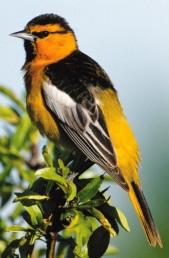
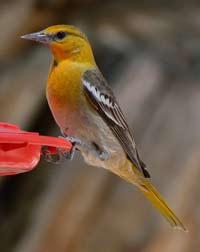
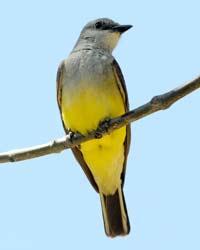 Western Kingbird
Western Kingbird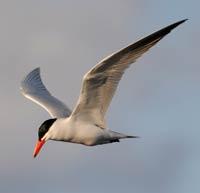 Caspian Tern
Caspian Tern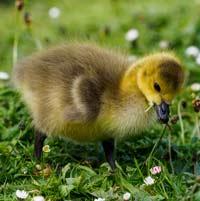 Canada Goose Gosling
Canada Goose Gosling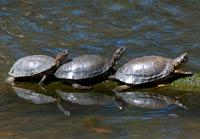 Western Pond Turtles
Western Pond Turtles